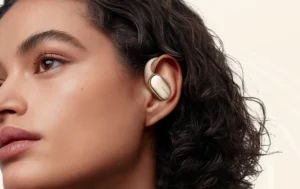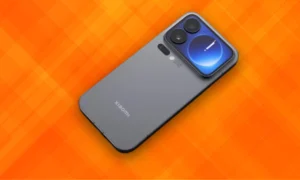Xiaomi AI Glasses: 5 Million Sales Target by 2027

Xiaomi Aims for 5 Million AI Glasses Sales by 2027: A Bold Bet on Future Tech
Get ready, because Xiaomi is seriously upping its game in the wearable tech world! They’ve just announced this massive goal: selling 5 million Xiaomi AI Glasses by 2027. This isn’t just some casual target; it shows they’re really confident about grabbing the top spot in the AI-powered smart glasses market. With a slick design, some seriously cool features, and prices that won’t break the bank, these glasses are lining up to go head-to-head with big names like Ray-Ban Meta and shake things up big time. Let’s dive into why everyone’s buzzing about the Xiaomi AI Glasses.
A Launch That Shattered Expectations
Dropped on June 26, 2025, during the “Human x Car x Home” event in Beijing, the Xiaomi AI Glasses made quite an entrance. Reports are saying they sold a whopping 80,000 units in just 15 days. Yep, that’s way more than they expected, and they quickly sold out on popular platforms like JD.com and Tmall. This immediate success even pushed Xiaomi to bump up their 2025 sales target from 300,000 to 500,000 units – a solid 60% jump, proving just how much demand there is.
Kicking off at 1,999 yuan (around $280 USD) for the basic model, these glasses are a sweet spot of style, smarts, and affordability. If you want the electrochromic lenses that let you tweak the tint, you’re looking at prices between $370 and $420 USD. That’s pretty competitive when you consider the Ray-Ban Meta glasses, which absolutely crushed it in 2024 with over 2 million units sold, really showing that people are ready for smart eyewear.

Features That Make a Difference
These Xiaomi AI Glasses are way more than just a fashion statement; they’re like a portable control hub for your digital life. They pack a 12MP camera, using that Sony IMX681 sensor, meaning you can snap photos in just 0.8 seconds and shoot 2K videos at 30fps with electronic image stabilization (EIS). Perfect for hands-free pics and vids when you’re out and about, like cycling or traveling.
At the core of it all is the Super XiaoAI assistant. This bad boy uses Xiaomi’s MiLM language model to do all sorts of cool stuff, like real-time translation in 10 languages, recognizing objects and text, and even controlling your other Xiaomi smart home gadgets – think thermostats or lights. Plus, they’ve got open-ear audio and five microphones for clear video calls and voice commands. They even handle QR code payments with a simple glance.

Weighing in at a feather-light 40 grams, and designed using data from 70,000 head scans to fit Asian faces perfectly, these glasses nail both comfort and style. You can grab them in three colors – black, tortoise brown, and parrot green – and with those electrochromic lens options, they’re not just functional, they look pretty darn good too, going toe-to-toe with some well-known brands on the style front.
A Strategic Move in a Growing Market
The whole smart glasses market is really taking off. IDC reckons global shipments will hit 12.8 million units in 2025, growing 26% year-on-year. China alone is expected to see a massive 107% increase, reaching 2.8 million units. Xiaomi, with its history of exploring AR tech like the Mijia Glasses Camera back in 2022, is totally in a prime spot to cash in on this trend.
Xiaomi’s strategy really leans on its strength in connected devices and its solid hardware background. Unlike a bunch of startups, Xiaomi has a dialed-in supply chain, a skilled engineering team, and a massive user base of over 10 million for its MiLM AI model. That’s a huge competitive edge. Partnering with Goertek, a top-tier manufacturer, ensures quality production, and integration with platforms like TikTok for live streaming just makes them even more appealing.
Fierce Competition and the Future of Smart Glasses
Xiaomi isn’t the only player in this arena, though. Meta’s Ray-Ban Meta Glasses have set a pretty high bar, selling over 2 million units in 2024 and planning to ramp up production to 10 million annually by 2026. Companies like Baidu, Huawei, and ByteDance are also jumping in, and rumors are swirling that Apple might even drop its own glasses by 2027. But Xiaomi’s unique selling point is its focus on value for money and that deep integration across a broad ecosystem, which could really grab consumers looking for cutting-edge tech without the sky-high price tag.
Why 5 Million?
That 5-million-unit target for 2027 really screams Xiaomi’s ambition to grab a serious chunk of the global AI glasses market. It’s not just based on their initial sales success; it’s also about the increasing demand for devices that blend fashion, function, and connectivity. The fact that Xiaomi can move fast and is already thinking about the next generation of glasses, possibly with AR displays, shows they’re playing the long game here.
The Verdict: A Connected, Stylish Future
The Xiaomi AI Glasses are more than just a gadget; they’re a statement from a brand that wants to lead the next wave of tech innovation. With a sleek design, AI-powered features, and a price that feels right, these glasses could genuinely change how we interact with the digital world. If Xiaomi hits that 5-million sales goal by 2027, they won’t just solidify their place in the wearable market; they’ll prove that top-tier tech can be accessible to everyone. So, are you ready to see the world through Xiaomi AI Glasses?
Sources: XR Vision, IDC, Lei Feng Network, South China Morning Post, Patently Apple, GadgetMatch







1 thought on “Xiaomi AI Glasses: 5 Million Sales Target by 2027”